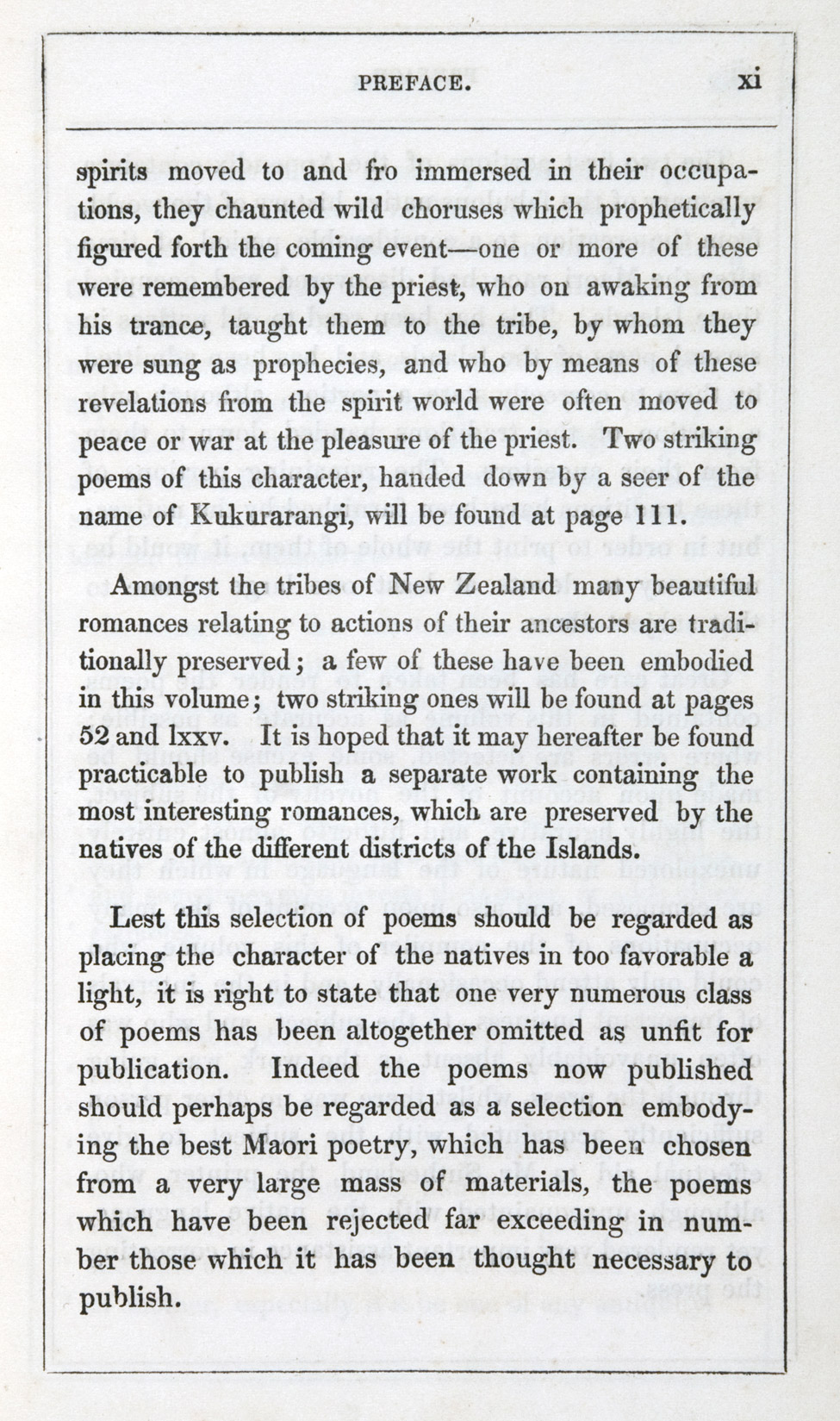Case 1
- Early Collectors and Publications, Polack and Grey

J. S. Polack. Manners and Customs of the New Zealanders; with Notes Corroborative of Their Habits, Usages, Etc. and Remarks to Intending Immigrants. London: James Madden & Co. and Hatchard and Son, 1840. Two volumes, volume one displayed.
Many of the early published accounts of New Zealand include very little about Māori mythology. Works such as John Savage’s Some Account of New Zealand (London, 1807) and R. A. Cruise’s Journal of a Ten Months’ Residence in New Zealand (London, 1823) dedicated no more than a few sentences on local religious practices.
In his New Zealand; being a Narrative of Travels and Adventures (London, 1838) and Manners and Customs (London, 1840), which is exhibited here, Joel Samuel Polack (1807–1882) provided one of the earliest in depth accounts of Māori mythology. Both works include chapters dedicated wholly or in part to topics such as the Māori origin myth, the demi-god Māui, descriptions of individual deities and their attributed powers, and how they were worshipped. Polack often drew parallels with ancient Greek mythology, a subject more familiar to his intended readership.

J. S. Polack. Manners and Customs of the New Zealanders; with Notes Corroborative of Their Habits, Usages, Etc. and Remarks to Intending Immigrants. London: James Madden & Co. and Hatchard and Son, 1840. Two volumes, volume one displayed.
Open image in new window

Sir George Grey. Ko nga moteatea, me nga hakirara o nga Maori. Wellington: Printed by Robert Stokes, 1853.
The first publications dedicated to the Māori oral tradition were produced by Sir George Grey (1812–1898), twice Governor of New Zealand. Beginning in the 1840s, Grey collected thousands of manuscripts written in Māori. These were given to him either by missionaries and colonial administrators or by his Māori informants like Te Rangikāheke (ca. 1815–1896), who produced for Grey a number of traditional waiata and legends.
Grey compiled a selection of these songs along with narrative texts into his first book, published as Ko Nga Moteatea me Nga Hakirara o Nga Maori. The work was, despite Grey’s heavy-handed editing, ‘an important beginning, one that generated much awareness of Māori lore and customs’ (Kerr 88). The waiata are followed by a narrative which summarises Māori cosmogony from the creation myth onward.
Donald Kerr. Amassing Treasures for All Times: Sir George Grey, Colonial Bookman and Collector (New Castle, DE: Oak Knoll Press, 2006).

Sir George Grey. Ko nga moteatea, me nga hakirara o nga Maori. Wellington: Printed by Robert Stokes, 1853.
Open image in new window


